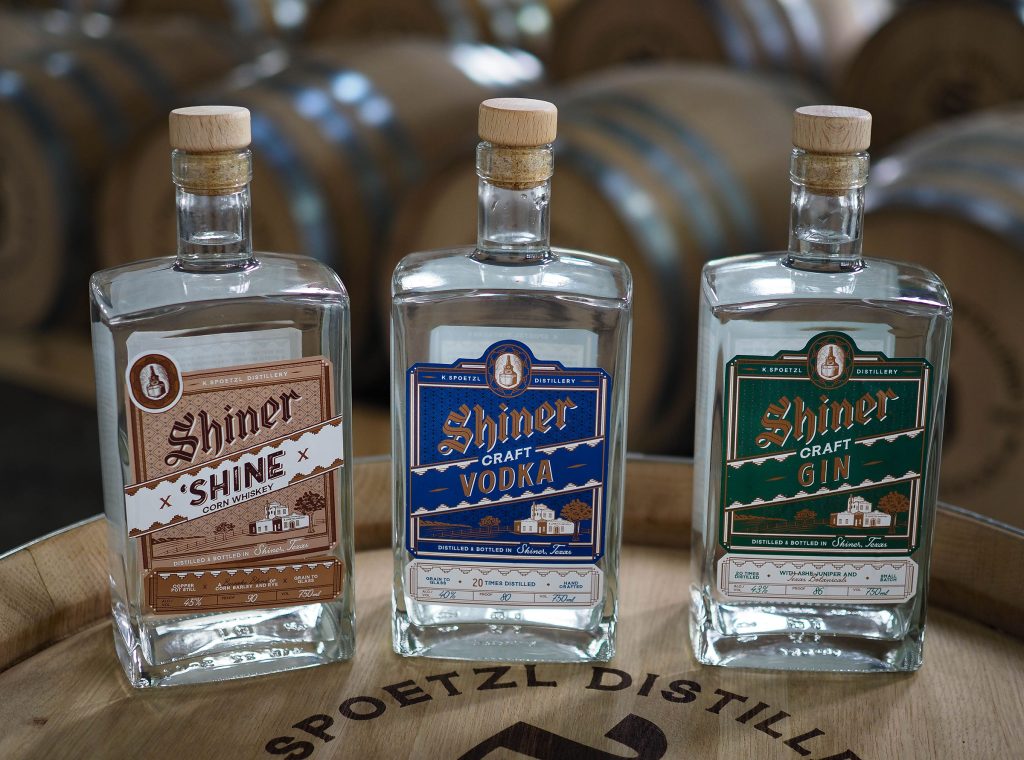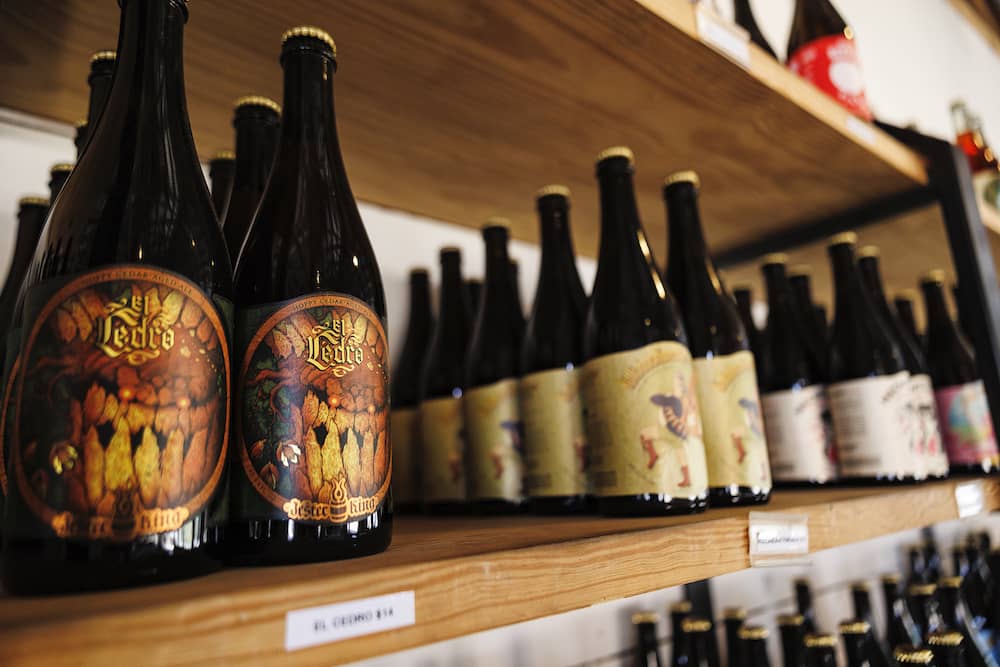Seawall Bar: Enjoy Drinks with Stunning Ocean Sights in Galveston
Wiki Article
Distillery Characteristics Revealed: a Trip Through the Science and Art of Spirits Manufacturing
As the drapes are drawn back on the detailed globe of distillery dynamics, a fascinating realm emerges where science and art assemble to create the spirits we appreciate. Behind the shut doors of distilleries exist secrets waiting to be unwinded, from the precise chemistry of purification to the fragile dancing of yeast in fermentation. The marriage of tradition and advancement in spirits production reveals a tapestry woven with threads of workmanship and technological improvements. Join us on a journey through the heart of purification, where each decline of spirit narrates of experience and passion, promising a much deeper understanding of the alchemy that changes grains and fruits right into the fluid gold we elevate in a toast.The Chemistry of Distillation
The chemistry of distillation, a basic procedure in the production of spirits, entails the separation of components based on their different boiling points. This process counts on the concept that each component in a liquid combination has a special boiling point, permitting for their individual removal. When warm is put on the mix, the element with the most affordable boiling point will evaporate first, climbing with the still and ultimately condensing back into liquid form. This distilled fluid, called the "heart cut," includes the wanted alcohol web content and taste compounds.Throughout purification, three main fractions are gotten: the "heads," which have unpredictable substances and greater alcohols that can be dangerous if eaten in big quantities; the "hearts," the valued part with the wanted ethanol and flavor account; and the "tails," which include heavier substances and fusel alcohols. Experienced distillers have to meticulously keep an eye on the temperature level and flow prices to separate these fractions successfully, making sure a premium end product. The chemistry of distillation is a delicate interplay of warmth, vaporization, and condensation that changes an easy liquid blend into a complex and fine-tuned spirit.
Artisanal Craftsmanship in Spirits Making
In the middle of the world of spirits manufacturing, artisanal workmanship plays a crucial function in elevating the high quality and character of distilled drinks (Seawall Bar). Artisanal craft distillers concentrate on small, hands-on production methods, often utilizing conventional strategies that have been passed down with generations. These committed artisans and females focus on high quality over quantity, paying thorough attention to every action of the distillation procedureArtisanal craftsmanship in spirits making involves a deep understanding of the raw products made use of, such as botanicals, fruits, or grains, and just how their features affect the final item. From picking the finest active ingredients to very carefully checking purification, fermentation, and aging, artisans instill their spirits with enthusiasm and knowledge.
Moreover, artisanal craft distillers frequently accept testing and advancement, pushing the limits of standard spirits manufacturing. They may introduce special taste accounts by including in your area sourced ingredients or making use of creative aging strategies. This dedication to creative thinking and quality results in spirits that are not only of extraordinary top quality but additionally display the artistry and individuality of the distiller.
Advancements in Aging Strategies

One prominent advancement acquiring traction is using smaller sized barrels for maturing spirits. By raising the surface area area-to-volume proportion, smaller barrels pass on tastes a lot more quickly, leading to an extra extreme maturation process. This technique is specifically preferred amongst craft distillers looking for to produce top quality spirits in a much shorter duration.
Furthermore, distillers are progressively turning to different timber kinds, such as cherry or acacia, to impart distinctive flavors to their aged spirits. These unique woods provide a special flavor account, setting their products apart in an open market.
In addition, innovations in innovation have made it possible for distillers to explore increased aging methods, such as ultrasound or temperature level and stress variants. These techniques enable accurate control over the aging process, causing cutting-edge flavor accounts that push the limits of standard spirits manufacturing.

The Role of Yeast in Fermentation
A vital part of the fermentation procedure in distilling is the duty played by yeast. Yeast, a single-celled bacterium, is critical in converting sugars into alcohol and co2 during fermentation. In the context of distilling spirits, yeast plays a critical function in the production of ethanol, which is the main alcohol in the majority of alcohols.Yeast achieves this through the procedure of anaerobic respiration, where it metabolizes sugars such as glucose and fructose into ethanol and carbon dioxide. Various strains of yeast can impart one-of-a-kind flavors and scents to the last spirit, contributing to the intricacy and character of the distilled item. Distillers carefully select yeast stress based upon their preferred flavor profile and fermentation characteristics.
The fermentation process can last anywhere from a few days to a few weeks, relying on factors such as yeast strain, temperature, and sugar web content. Surveillance and regulating the fermentation process are crucial to ensure optimal yeast task and alcohol production. In general, yeast is a basic gamer in the alchemical makeover of raw ingredients into the spirited elixirs taken pleasure in by consumers worldwide.
Sustainable Practices in Distilleries
Distilleries are progressively recognizing the relevance of embracing environmentally friendly actions throughout the manufacturing process. Distilleries call for considerable amounts of water for different phases of production, and executing water recycling systems or making use of rain harvesting techniques can dramatically lower water usage and decrease the distillery's overall environmental footprint.Moreover, sustainable power sources are obtaining grip in the distilling world. Many distilleries are buying sustainable power innovations such as photovoltaic panels or biomass boilers to decrease dependence on non-renewable energy sources and lower greenhouse gas emissions. In addition, waste management methods play a crucial function in lasting distillery procedures. Distilleries are checking out ingenious ways to repurpose byproducts such as spent grains or purification deposits, turning waste right into resources via approaches like pet feed production or composting. By accepting sustainable methods, distilleries can not just lessen their ecological effect however additionally attract environmentally mindful customers and add to an extra sustainable future for the market.
Final Thought
Finally, the elaborate dynamics of distillery procedures entail a mix of scientific concepts and artistic workmanship. From the chemistry of distillation to the function of yeast in fermentation, distilleries are continuously introducing and trying out to develop high-grade spirits. By including lasting practices and embracing brand-new aging techniques, distilleries are forming the future of the market. The blend of tradition and technology in spirits production highlights the complexity and creativity associated with this ancient craft.As the curtains are drawn back on the complex globe of distillery characteristics, an interesting world emerges where scientific research and art assemble to produce the spirits we savor.The chemistry of purification, a fundamental process in the production of spirits, involves the separation of parts based on their different boiling factors.Moreover, artisanal craft distillers usually embrace testing and technology, pushing the limits of standard spirits manufacturing. In the context of distilling spirits, yeast plays a critical role in the production of ethanol, which is the primary alcohol in many alcoholic drinks.
From the chemistry of purification to the role of yeast in fermentation, distilleries are frequently introducing and exploring to develop high-quality spirits.
Report this wiki page